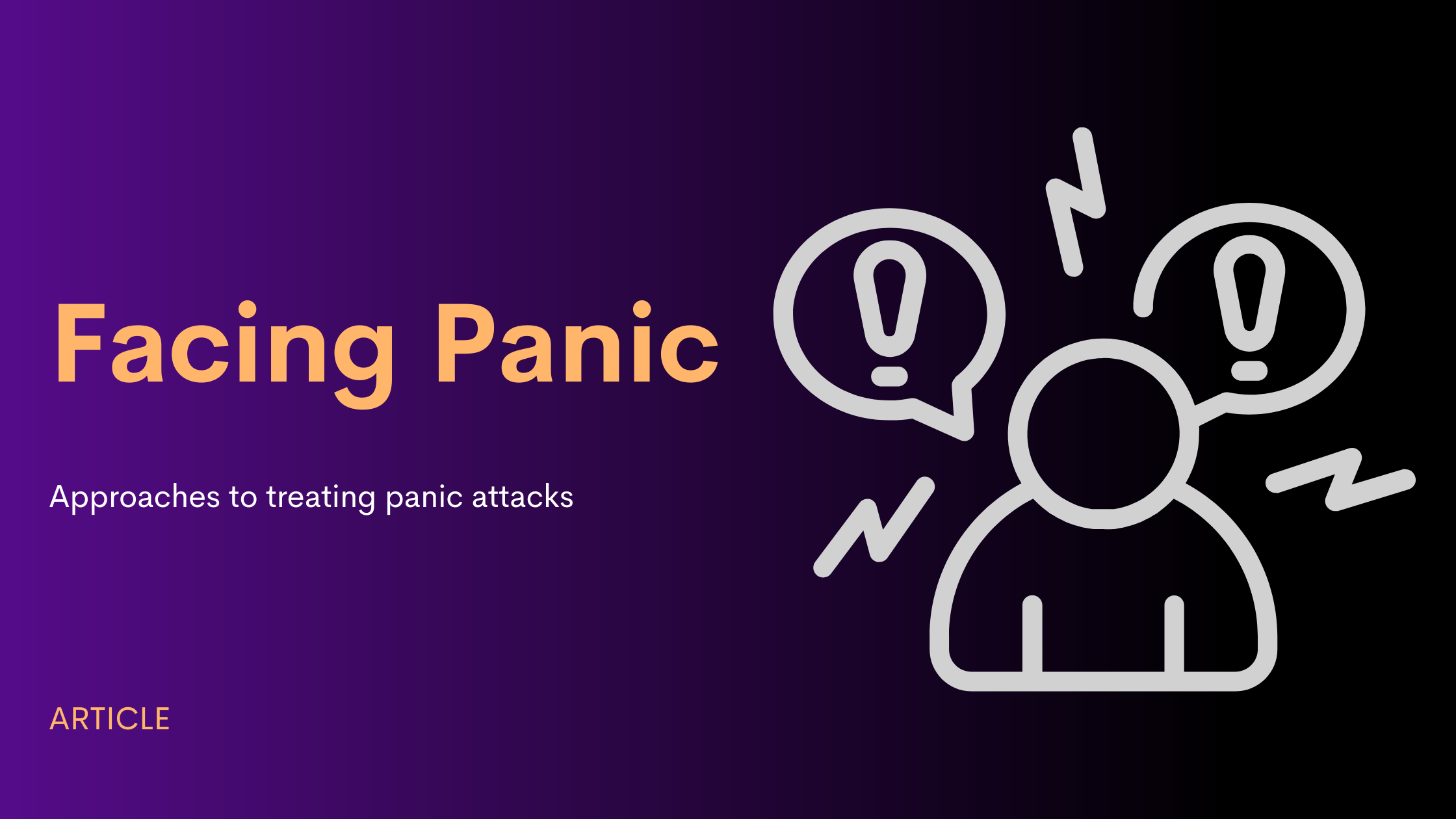Facing Panic
By R. Reid Wilson, Ph.D.
Estimated reading time: 4 minutes, 19 seconds.
People who are hit with panic attacks have a common response. They feel compelled to fight the symptoms with all their available resources. They brace for the fight as they approach any feared situation. And if they predict this on-guard approach will fail, they avoid entering the scene as the only way they can guarantee their safety. But this resistance and avoidance come with a price: a restricted lifestyle, anxious hypervigilance, and often depression.
Over the past three decades, specialists in the treatment of panic disorder have helped their clients move from a commitment to resist their symptoms to one of acceptance. By allowing the racing heart and spinning head and wobbly legs to continue in a permissive mental environment, clients discover that they don’t actually have a heart attack, go crazy, or faint. As they adopt this new permissive attitude – “It’s OK to be anxious here.” “I can handle these symptoms.” “I’m willing for people to notice my nervousness.” – then each panic attack runs a more limited course with far less intensity.
While this permissive approach has been standard, there also has been a secondary approach to treatment: to voluntarily, purposely seek to increase the uncomfortable physical symptoms. This paradoxical approach, dating back at least to Dr. Victor Frankl’s logotherapy, is now set to take center stage. The chief reason is a pragmatic one: the more provocative treatment is the briefest of treatments.
This winter, the Anxiety Disorders Association of America will release Facing Panic: Self-help for People with Panic Attacks. This guide is a synthesis of the work of this field’s foremost clinician-researchers. Here is the central therapeutic strategy, expressed as five instructions to the reader:
Get anxious on purpose. Once you are anxious, encourage the symptoms to continue for a long time. During this time, stop worrying and start supporting yourself. Let go of your safety crutches. Do this over and over again, in all your fearful situations.
Let’s look at each of the five directives:
Get anxious on purpose. The key here is not just to become anxious, but to purposely choose to get anxious. It is the seeking of the anxiety state that distinguishes this step from the more common approach of tolerating or putting up with the symptoms. It is a shift in one’s relationship toward anxiety, and it is a critical distinction. “Having” anxiety is insufficient; “wanting” anxiety is the central goal.
Once you are anxious, encourage the symptoms to continue for a long time. Here is an extension of the first step: invite your distress to stay around as long as possible. Try to keep it. If it subsides, feel disappointed, and look for ways to bring it back. We know from our studies of flooding that prolonged exposure leads to habituation. But this only occurs if the person drops his guard and allows the anxiety to exist during that time. I am proposing that we challenge the foundation of this flooding protocol. We can greatly shorten the required length of exposure if we emphasize the person’s therapeutic stance: first, to seek out the uncomfortable symptoms, and then, to consciously desire for them to remain for as long as possible.
During this time, stop worrying and start supporting yourself. While we encourage clients to feel scared and to feel the uncomfortable physical sensation of panic, we discourage worrying thoughts (there is an appropriate therapeutic time to encourage worried thoughts, too, but I won’t cover that in this brief article.). We are battling two fronts here. First, panic sufferers will worry about just how uncomfortable the symptoms will feel. But, more importantly, they will worry about the catastrophic outcomes: fainting, having a heart attack, making a fool of themselves. We want them to learn, through specific exercises, that the panic attack will be uncomfortable but not horrible. Once they can downgrade their interpretation of the symptoms, then they can accept their symptoms instead of fear them. This stance is reflected in such supportive statements as, “I’m scared, and I’m safe.”
Let go of your safety crutches. Safety crutches are actions that help prevent or mute the symptoms of panic. We have identified over seventy behaviors, such as carrying an anti-anxiety medication in their pocket, practicing breathing skills, monitoring their pulse rate, sitting close to an exit, leaning against a wall, staying somewhere only briefly, turning the radio up, never passing a car, and always avoiding crowds. While these are understandable, protective strategies, they all are based on the fundamental misperception that panic symptoms result in catastrophe. We help clients identify their safety crutches and gradually reduce their reliance on them. As they realize that they can manage the sensations of panic without these restrictions, they are willing to take more risks in provoking situations.
Do this over and over, in all your fearful situations. To overcome panic, people need to practice their skills again and again, in as many different locations and circumstances as possible. Primary in this effort is to want to feel anxious and to desire to remain uncomfortable for as long as possible. As they change their attitude in this manner, they discover that going face-to-face with panic eventually reduces their symptoms and gives them back their freedom.
You may like…




